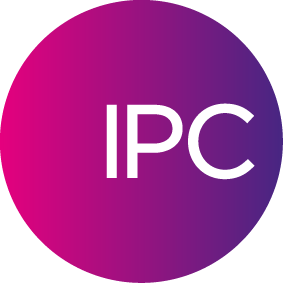by Patrick Chambeau, Director of Marketing, IPC
While the financial services industry has traditionally been at the forefront of technological change, until recently it was cautious about embracing the cloud. Questions of trust, quality of providers, certifications, process, and teams dedicated to serve customers contributed to murky cloud adoption. But as CIO roles drastically shift from operating IT to strategic IT alignment with digital transformation and overall business goals of the entire enterprise, moving to the cloud has become a priority.
A cloud-first strategy means financial market participants can better manage their economics, easily migrate from unnecessarily complex and aging legacy systems, increase mobility and agility, improve operational efficiencies, and most importantly, focus on business outcomes instead of worrying about IT. It’s no wonder then that cloud revenues are poised to reach $411 billion by 2020 — nearly twice as much as in 2016, according to research conducted by Gartner.
Major investments are being made to bring to market cloud-based software-as-a-service (SaaS) solutions designed to address the specific needs of regulated financial market users. Demand from institutional investors, asset managers, hedge funds, market makers, broker-dealers, and other participants in the financial ecosystem are driving this investment for the following reasons:
1. SaaS-based cloud addresses the business challenges CIOs, IT directors and owners face.
- Financial performance – Rather than focusing on gaining efficiencies and contributing savings to the bottom-line of a P&L statement, the actual question is how CIOs can help build, enable, and implement new digital use cases that lead to top-line revenue growth. Cloud-based SaaS platforms minimise the need for internal IT projects, allowing IT resources to be redirected and invested in other higher value digital transformation initiatives. In addition, organisations benefit from an improved total cost of ownership (TCO).
- Risk reduction – It’s critical that businesses can maximise security but also manage IT in a way that minimises downtime or poor performance, and allows them to swiftly deploy IT projects or apps. A hybrid delivery model combines a SaaS-based at a Cloud Service Provider (CSP) application with the primary customer locations connected via a private network to the CSP. This ensures customers have service guarantees and visibility for their primary locations, as well as hardened security.
- Business alignment – The pace and requirements of business today necessitates faster integration of newly merged companies, speedier time-to-market, and faster deployment in emerging markets. Cloud SaaS can help make IT flexible and much more adaptable by turning it into something that’s delivered or used on-demand, when it’s needed, and “as a service.”
2. Infrastructure models vary, just as business needs do
Why choose one platform over another? With IT infrastructure becoming more and more of a commodity, CIOs will be shifting their attention toward brokering services that enable them to plan, procure, and orchestrate cloud services from multiple vendors across hybrid clouds from a single pane of glass.
3. Components of trust in the cloud: security, data care, certifications and services
- Security: the emergence of cyber risks is a potentially mortal threat for all capital market participants and users. As political instability grows, managing cyber risk is vital. It will not only be a matter of national security, but also “one of the greatest risks facing free and fair capital markets”. With this concerning trend, financial firms need to trust that a third party is unquestionably secure and its data will be protected.
- Data: data protection, security and reliability are paramount, particularly as markets emerge, more and more connectivity is created, the number of market participants grows, and the deluge of data that must be retained continues.
- ISO certifications: Third parties are continually investing in renewing and expanding their range of ISO certifications to reaffirm that their management systems, infrastructure and professional services are of the highest quality globally.
- Comprehensive and clearly structured services: For services provided by third parties, it is essential to understand and have clarity around how services are managed, the quality of service that’s provided, the processes that are in place, and how responsibilities are shared between supplier and customer. Finally, let’s not underestimate the impact moving to cloud can have on the network (where services are outsourced to a third party and accessed via the internet or a VPN).
Financial organisations are under growing pressure to have always-on, seamless communications that enable them to conduct business without interruption or delay, wherever they are located. Tighter regulations, emerging markets, and competitive pressures mean they need to work smarter and faster, with minimal overhead. It’s therefore no surprise that financial institutions are embracing cloud-based models for more flexibility and higher value generated to support their digital transformation.

